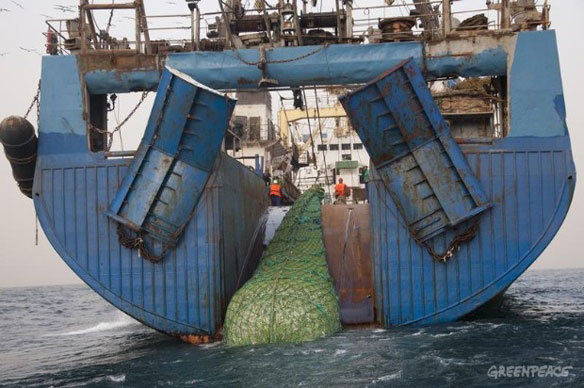
The 120 meter long Russian super trawler “Mikhail Verbitsky”. Photo source: © Greenpeace / Pierre Gleizes
Excerpts;
For almost a century, fishing fleets have trawled for shrimp off Spain’s Mediterranean coast by dragging nets along the flat, shallow coastal sea floor. But in the 1960s, they also started to pursue shrimp farther offshore and into rugged canyons as deep as 800 metres. The impact they had on this rougher terrain was a mystery.
In 2006, geoscientists surveying canyons off Spain’s coast found smooth slopes which they attributed to an underwater cascade, but one of the smoothed slopes was in the lee of the proposed cascade. While trying to come up with reasons, Pere Puig, a marine geologist at the Institute of Marine Sciences in Barcelona, Spain, and his colleagues realized that the anomalies occurred in a trawling zone and hypothesized that trawlers were scraping silt off ridge tops and dropping it into canyon bottoms…
Read Full Article, Nature Journal: “Fish trawling reshapes deep-sea canyons”









